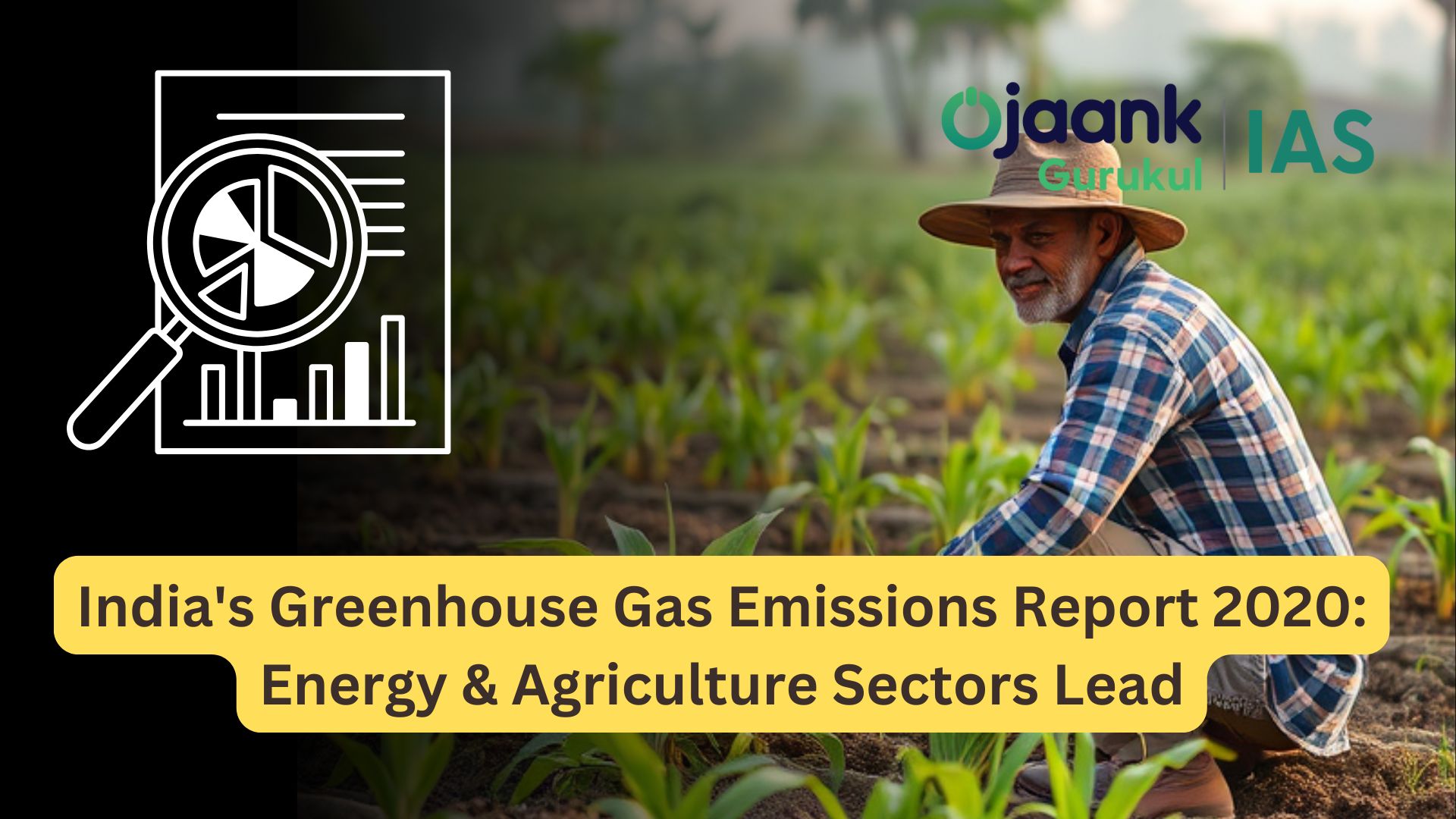India's Greenhouse Gas Emissions Report 2020: Energy & Agriculture Sectors Lead

Introduction
India’s fourth Biennial Update Report (BUR) for 2020, submitted to the UN Framework Convention on Climate Change (UNFCCC) on December 30, 2024, unveils vital insights into the nation’s greenhouse gas (GHG) inventory. The report, a significant step in tracking India’s climate commitments, highlights a rare dip in overall emissions, largely due to the global slowdown during the COVID-19 pandemic.
Key sectors like energy and agriculture dominate GHG emissions, while India’s progress in carbon sink expansion and energy efficiency reflects its commitment to the Paris Agreement. Let’s dive into the major takeaways from the report.
India’s Emissions: A Snapshot
- Overall GHG Emissions Decline
- Total GHG emissions (including Land Use, Land Use Change, and Forestry, or LULUCF) fell to 2,437 MtCO₂e, a 7.93% decrease compared to 2019.
- Excluding LULUCF, emissions dropped by 5.52%, an anomaly for a developing economy with rising energy demands.
- Historical Trends
- Between 1994 and 2020, India’s emissions (including LULUCF) surged by 98.3%, with a 13.5% increase since 2014.
- Despite the 2020 dip, the trajectory underscores the challenge of decoupling economic growth from emissions.
Sectoral Contributions to Emissions
1. Energy Sector
- Share of Total Emissions: 92% of CO₂ emissions.
- Key Contributors:
- Energy industries: 56%
- Manufacturing: 17%
- Transport: 13.28%
- Emissions from the sector decreased by 6% in 2020, following an annual growth rate of 3.72% from 2016-2019.
2. Agriculture Sector
- Emissions: 406 MtCO₂e, contributing 13.72% of total GHG emissions.
- Primary Sources:
- Livestock emissions (enteric fermentation): 54.84%
- Rice cultivation: 16.68%
- Agricultural soils: 23.26%
- Methane and nitrous oxide are the dominant gases from this sector.
3. Industrial Processes and Product Use (IPPU)
- Emissions in this sector dropped by 9.48%, amounting to 239 MtCO₂e.
- Noteworthy Changes:
- Chemical industry emissions spiked by 73.76%.
- Metal industry emissions declined by 53.29%.

The Role of LULUCF in Emissions
- Net Carbon Sink: LULUCF absorbed 522 MtCO₂e, a 7.5% increase from 2019.
- Key Factors:
- Expansion of forest and tree cover.
- Inclusion of Harvested Wood Products as a new sink category.
Challenges and Achievements in Climate Goals
- Progress on Emissions Intensity
- India reduced its emissions intensity by 36% compared to 2005 levels, aligning with its 2030 target of a 45% reduction.
- Renewable Energy Milestones
- As of October 2024, non-fossil energy sources accounted for 45.52% of installed capacity.
- Solar and wind together contributed 12.4%, while coal remained dominant at 71.75%.
- Biodiversity Concerns
- While forest and tree cover have increased, biodiversity-rich ecosystems, including mangroves, face significant threats.
Global Perspective: Climate Risks
India’s GHG trends echo global concerns over climate change. According to the World Economic Forum's Global Risks Report 2024, extreme weather events remain the most significant long-term risk, necessitating immediate action.
Conclusion
India’s 2020 GHG inventory sheds light on the complexities of balancing development with environmental stewardship. While progress in renewable energy and carbon sequestration offers hope, the challenges of curbing emissions from energy and agriculture remain formidable. Achieving long-term climate goals requires innovative strategies, stronger policy implementation, and international collaboration.
By addressing these challenges, India can continue to set a global example in sustainable growth and climate action.
Stay Updated: Bookmark this page for the latest updates on India’s climate commitments and GHG trends. Share your thoughts and insights in the comments below!
Want to learn more about India’s climate strategies and how they impact global efforts? Subscribe to our newsletter for regular updates!